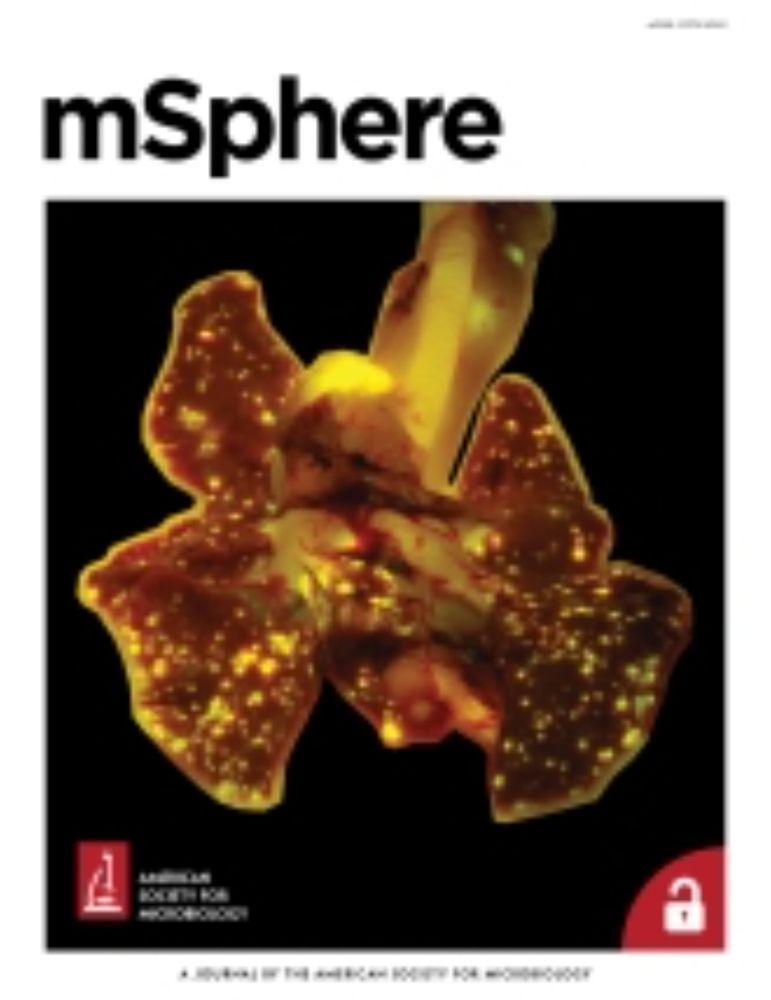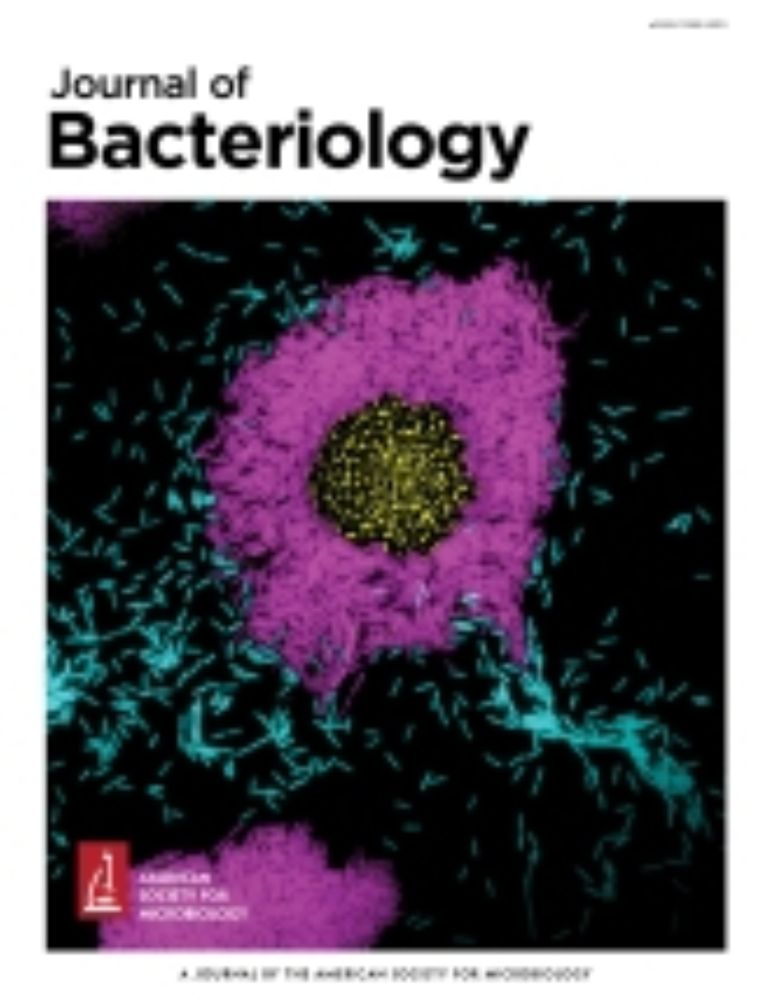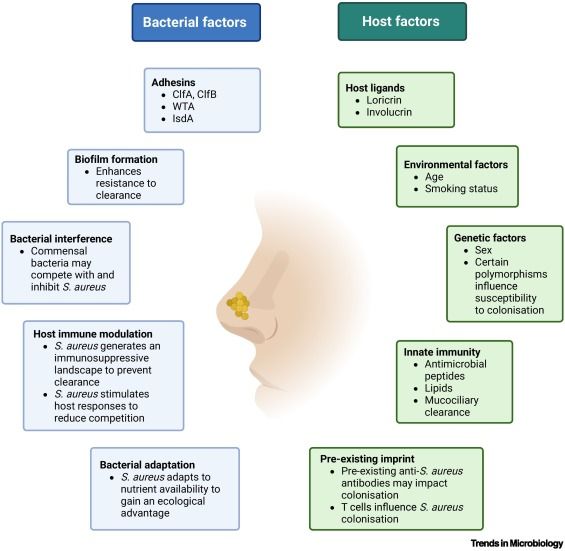
Our new preprint shows more than half of #Klebsiella pneumoniae neonatal sepsis cases in African and South Asian are nosocomial, acquired through transmission in neonatal units. #WAAW
doi.org/10.1101/2025...
![figure showing estimated proportion of cases in clusters, for each site. range from 0.04 to 0.93, mean estimate in random effects model is 0.57 [0.46,0.68]](https://cdn.bsky.app/img/feed_thumbnail/plain/did:plc:q5nky4heg5sfix4get4zh2pw/bafkreibshmuvkuafxwd2uk3r42ss6ma2dhmaidbysgvufnbkbv5cn4guai@jpeg)
Our new preprint shows more than half of #Klebsiella pneumoniae neonatal sepsis cases in African and South Asian are nosocomial, acquired through transmission in neonatal units. #WAAW
doi.org/10.1101/2025...


Human nasal organoids (HNOs) are a new model system for studying bacterial colonization and interspecies interactions. A big congratulations to the whole team, especially co-first authors: Andrea Boyd and Leah Kafer

Human nasal organoids (HNOs) are a new model system for studying bacterial colonization and interspecies interactions. A big congratulations to the whole team, especially co-first authors: Andrea Boyd and Leah Kafer
Spectacular atomic force microscopy time course studies from Carolina Borrelli et al. in Nature Microbiology show how polymyxin drugs (like colistin) cause blebbing and shedding of the Gram-negative bacterial outer membrane
It looks almost like the bacilli 🦠 caught smallpox then died

Spectacular atomic force microscopy time course studies from Carolina Borrelli et al. in Nature Microbiology show how polymyxin drugs (like colistin) cause blebbing and shedding of the Gram-negative bacterial outer membrane
It looks almost like the bacilli 🦠 caught smallpox then died
www.sciencedirect.com/science/arti...

www.sciencedirect.com/science/arti...
www.annualreviews.org/content/jour...




www.annualreviews.org/content/jour...
TLDR: O-acetylation and wall teichoic acid compete for space on S. aureus peptidoglycan. This competition regulates DNA release, and thus immune receptor activation, during infection!
www.biorxiv.org/content/10.1...
#microsky #immunosky

TLDR: O-acetylation and wall teichoic acid compete for space on S. aureus peptidoglycan. This competition regulates DNA release, and thus immune receptor activation, during infection!
www.biorxiv.org/content/10.1...
#microsky #immunosky
It was a pleasure to contribute to this review, with @pinholab.bsky.social and Friedrich Götz
journals.asm.org/doi/10.1128/...

It was a pleasure to contribute to this review, with @pinholab.bsky.social and Friedrich Götz
journals.asm.org/doi/10.1128/...
@c-elfmann.bsky.social @cp-trendsmicrobiol.bsky.social @unigoettingen.bsky.social @imprsgs.bsky.social #subtiwiki
www.cell.com/trends/micro...

@c-elfmann.bsky.social @cp-trendsmicrobiol.bsky.social @unigoettingen.bsky.social @imprsgs.bsky.social #subtiwiki
www.cell.com/trends/micro...
The Zychlinsky Lab and @raunser-lab.bsky.social identified the first protein that converts chromatin into an immune effector: Myeloperoxidase transforms chromatin into neutrophil extracellular traps. Now published in @nature.com:
www.nature.com/articles/s41...

The Zychlinsky Lab and @raunser-lab.bsky.social identified the first protein that converts chromatin into an immune effector: Myeloperoxidase transforms chromatin into neutrophil extracellular traps. Now published in @nature.com:
www.nature.com/articles/s41...
There will be lots of Selected Abstract talks so submit an abstract to be considered!
There will be lots of Selected Abstract talks so submit an abstract to be considered!
Nasal colonisation by S. aureus is linked with depression in a human cohort and shown in a mouse model to cause decreased serotonin and dopamine in the brain
#MicroSky #Depression
www.nature.com/articles/s41...

Nasal colonisation by S. aureus is linked with depression in a human cohort and shown in a mouse model to cause decreased serotonin and dopamine in the brain
#MicroSky #Depression
www.nature.com/articles/s41...



"A STING-adjuvanted outer membrane vesicle nanoparticle vaccine protects against lethal 𝘗𝘴𝘦𝘶𝘥𝘰𝘮𝘰𝘯𝘢𝘴 𝘢𝘦𝘳𝘶𝘨𝘪𝘯𝘰𝘴𝘢 pneumonia"
🔗 doi.org/10.1172/jci....

"A STING-adjuvanted outer membrane vesicle nanoparticle vaccine protects against lethal 𝘗𝘴𝘦𝘶𝘥𝘰𝘮𝘰𝘯𝘢𝘴 𝘢𝘦𝘳𝘶𝘨𝘪𝘯𝘰𝘴𝘢 pneumonia"
🔗 doi.org/10.1172/jci....
www.cell.com/cell-reports...
#cryoEM @dshatskiy.bsky.social @jakecolautti.bsky.social

www.cell.com/cell-reports...
#cryoEM @dshatskiy.bsky.social @jakecolautti.bsky.social
Pathogenic E. coli use protein FimH to grab onto the gut lining
New microgels mimic the mannose binding sites—acting as “decoys” to drag bacteria away and protect the intestine in IBD
Adherent-invasive E. coli (AIEC), enriched in Crohn’s disease, are a key target for this strategy

Pathogenic E. coli use protein FimH to grab onto the gut lining
New microgels mimic the mannose binding sites—acting as “decoys” to drag bacteria away and protect the intestine in IBD
Adherent-invasive E. coli (AIEC), enriched in Crohn’s disease, are a key target for this strategy


Intracellular 𝘗𝘴𝘦𝘶𝘥𝘰𝘮𝘰𝘯𝘢𝘴 𝘢𝘦𝘳𝘶𝘨𝘪𝘯𝘰𝘴𝘢 cells can only escape vacuoles with help from extracellular cells via type III secretion–driven Ca²⁺ influx, ultimately promoting pathogen spread in vivo.
Suzanne Fleiszig Lab @UCBerkeley in Nature Comm

Intracellular 𝘗𝘴𝘦𝘶𝘥𝘰𝘮𝘰𝘯𝘢𝘴 𝘢𝘦𝘳𝘶𝘨𝘪𝘯𝘰𝘴𝘢 cells can only escape vacuoles with help from extracellular cells via type III secretion–driven Ca²⁺ influx, ultimately promoting pathogen spread in vivo.
Suzanne Fleiszig Lab @UCBerkeley in Nature Comm
My postdoc Paz asked how cholera toxin (CT) helps Vibrio cholerae thrive in the gut.
Turns out, CT rewires epithelial metabolism toward L-lactate production—fueling pathogen growth in the small intestine during disease

My postdoc Paz asked how cholera toxin (CT) helps Vibrio cholerae thrive in the gut.
Turns out, CT rewires epithelial metabolism toward L-lactate production—fueling pathogen growth in the small intestine during disease


